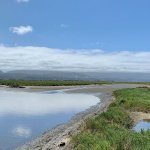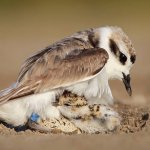By: Joaquín Aldabe & Nicolas Marchand
One of the beauties of being a bird is the ability to move and find new habitat when needed. In this way, shorebirds don’t the follow the boundaries of protected reserves, using working lands during non-breeding and migration seasons. To be effective, conservation efforts in protected areas need to be complemented with actions outside of these areas, including in productive landscapes. When these lands that focus on economic value incorporate appropriate management activities birds will benefit.
Grasslands used for ranching are widely used by various species of shorebird including Buff-breasted Sandpiper (Calidris subruficollis), American Golden-Plover (Pluvialis dominica), Upland Sandpiper (Bartramia longicauda) and Pectoral Sandpiper (Calidris melanotos). Integrating conservation and production is key to achieving conservation objectives on a wider scale, and it helps secure the resources and conditions that many shorebirds require during their annual life cycle.
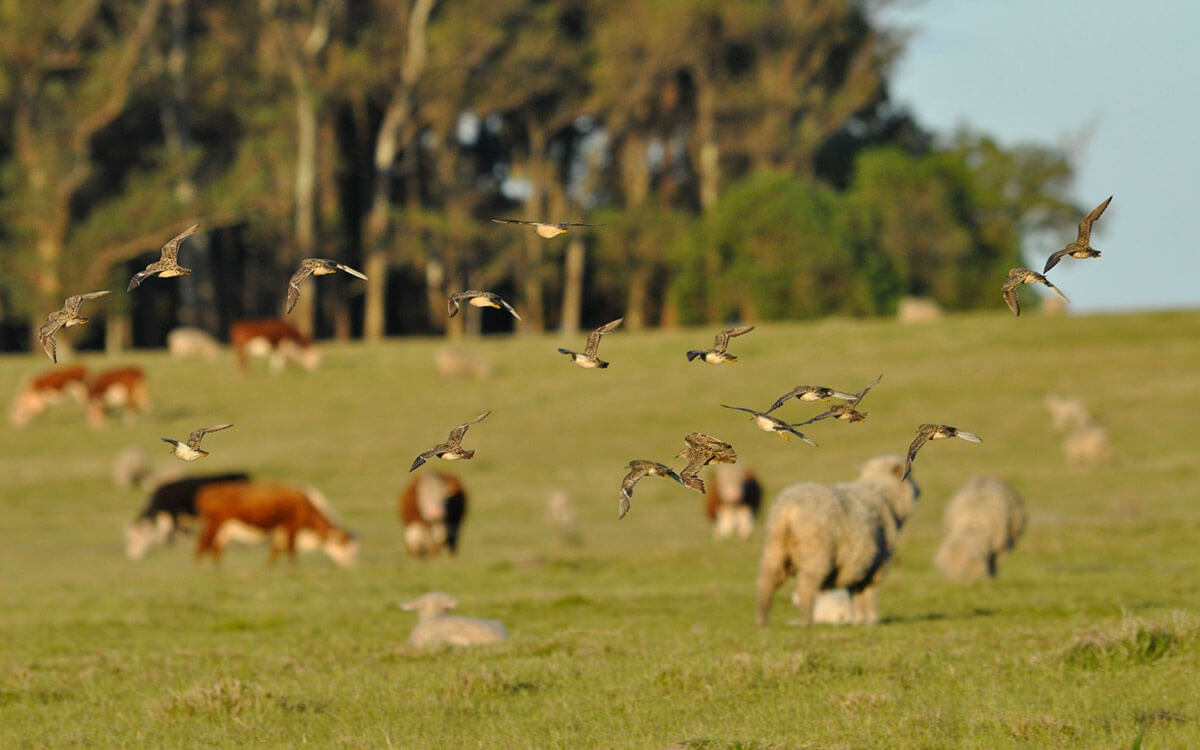
a flock of Buff-breasted Sandpiper flying at a cattle ranch in Uruguay. Photo: Joaquín Aldabe.
The System of Coastal Lagoons of Eastern Uruguay covers an area of approximately 247,105 acres (1,000,000 hectares) extending through five coastal lagoons which share a similar ecosystem, are inter-connected and support important populations of migratory shorebirds. Shorebirds can be found in a variety of habitats such as grasslands, wetlands, sandy areas and the coasts of the lagoons as wintering sites during their migration to the south of the continent. In addition to several grassland species other species that are more commonly found in coastal environment such as Red Knot (Calidris canutus rufa) and White-rumped Sandpiper (Calidris fuscicollis) are present in the area.
The landscape of the coastal lagoons is mostly privately-owned and is threatened by agriculture, intensive grazing (with replacement of natural grasslands), urbanization and uncontrolled recreational activities. Although it is true that some of the lagoons (eg. Laguna de Rocha and Laguna Garzón) have already been incorporated into the Uruguayan National Protected Area System (SNAP, Sistema Nacional de Áreas Protegidas – del Ministerio del Ambiente de Uruguay), and others are on the way to inclusion (eg. Laguna de Castillos), there is still no approach to the protection of the area as a single conservation and management unit. Nonetheless, productive activities are considered a fundamental tool for protected areas according to the current concepts employed by the SNAP.
The Fundación Amigos de las Lagunas Costeras (Friends of the Coastal Lagoons Foundation) (http://lagunascosteras.org.uy) has worked towards the conservation of the coastal lagoons of Uruguay since its founding in 2006. Initially it was focused on Laguna de Rocha and integrated pioneering producers looking for alternative ranching practices which permitted effective production while also maintaining habitat quality for shorebirds and biodiversity.
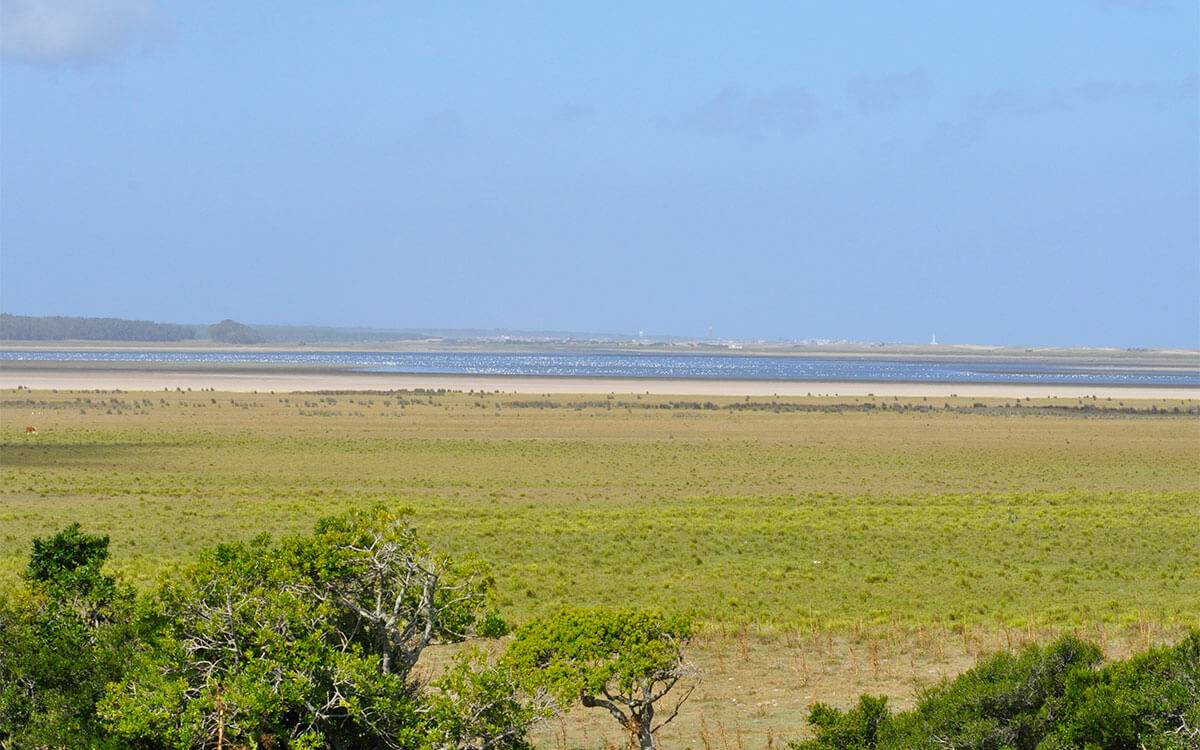
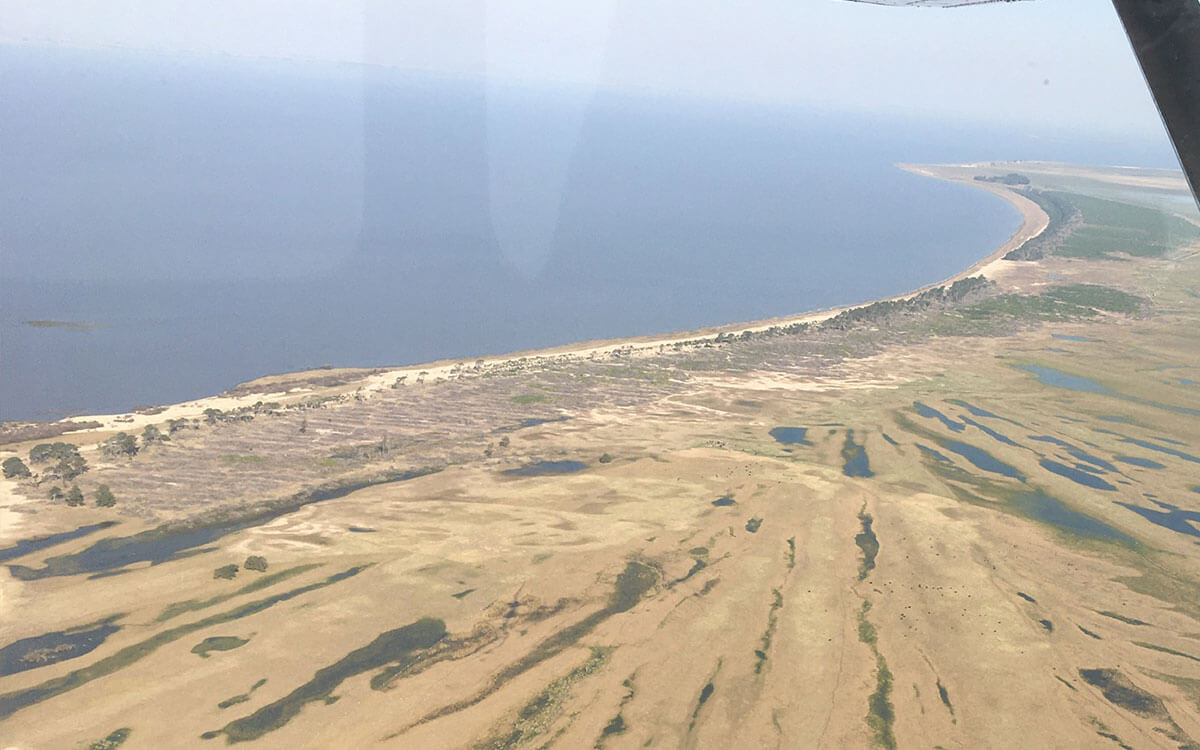
The System of Coastal Lagoons in Uruguay covers an area of approximately 247,105 acres (1,000,000 hectares) extending through five coastal lagoons. Photos: Joaquín Aldabe.
Recently, with the support of Manomet, the Department of Agrarian Systems and Cultural Landscapes of CURE (Centro Universitario Regional Este de la Universidad de la República – Eastern Region University Centre of the University of the Republic) and the U.S. Fish and Wildlife Service (USFWS), the Fundación is implementing its first project focused on integrated management of the coastal lagoons of Uruguay for the productive conservation of shorebirds, where both the ranchers and cattle will play a key role. The long-term are part of a cohesive collective vision that views the coastal lagoons as a single unit and where all are involved in the planning of actions and the maintenance of the habitat for the biodiversity that the ecosystem sustains. “During the project, we visit producers and invite them to work towards the dual objectives of production and conservation, analyzing the possibilities of improving the performance of their properties, both economically and for the protection of shorebirds. The principal focus is to find management actions that represent positive outcomes for both the producer and the birds” affirms Federico Pírez de la Fundación Lagunas Costeras, subdirector del proyecto.
To date, 52 producers have been identified and visited in the area of influence of the lagoons (Rocha, 15 producers; Garzón, 10; Merín, 10; Castillos, 9; and José Ignacio, 8). The project will continue to recruit additional producers who take action for key territories for shorebirds.
It is hoped that this process will contribute to the creation of a network of producers in the lagoons area. These ranchers can identify and differentiate themselves as eco-friendly producers who not only share a single ecosystem that produces efficiently, but also one that conserves biodiversity, and shorebirds in particular. This network will also facilitate exchange of experiences and lessons learned by the local producers and others within the Western Hemisphere Shorebird Reserve Network (WHSRN). Next year the first Meeting of Producers of the Five Coastal Lagoons will take place, where the results of the efforts will be shared with specific examples of valuable integrations of production and conservation.
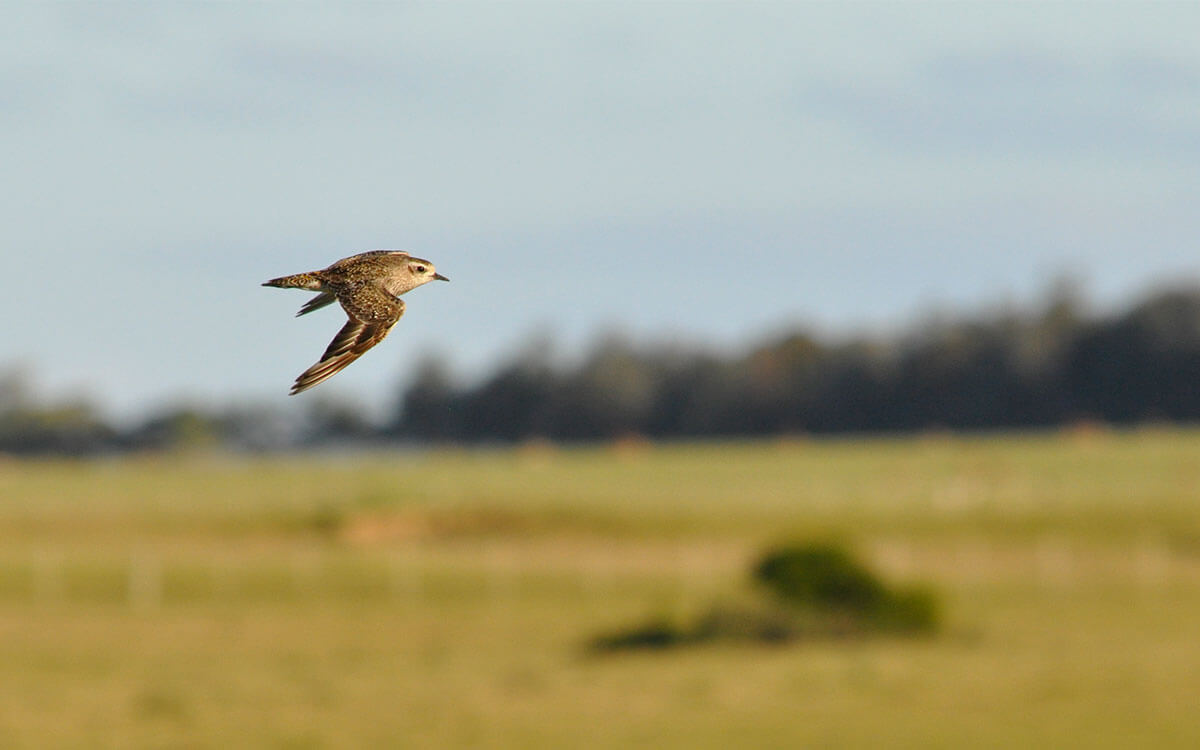
An American Golden Plover at Laguna de Rocha WHSRN site part of the system of Coastal Lagoons of Eastern Uruguay. Photo: Joaquín Aldabe
Achieving a connection between the ranchers of the coastal lagoons of Uruguay and a pride in the management of their lands is a huge step towards guaranteeing the health and permanence of this landscape of special importance both for the country and the continent.
For more information about the shorebird conservation work in working lands in Uruguay you can contact Joaquín Aldabe, Ranching and Shorebird Conservation Specialist of Manomet’s Flyways program.
Cover Photo by Joaquín Aldabe





